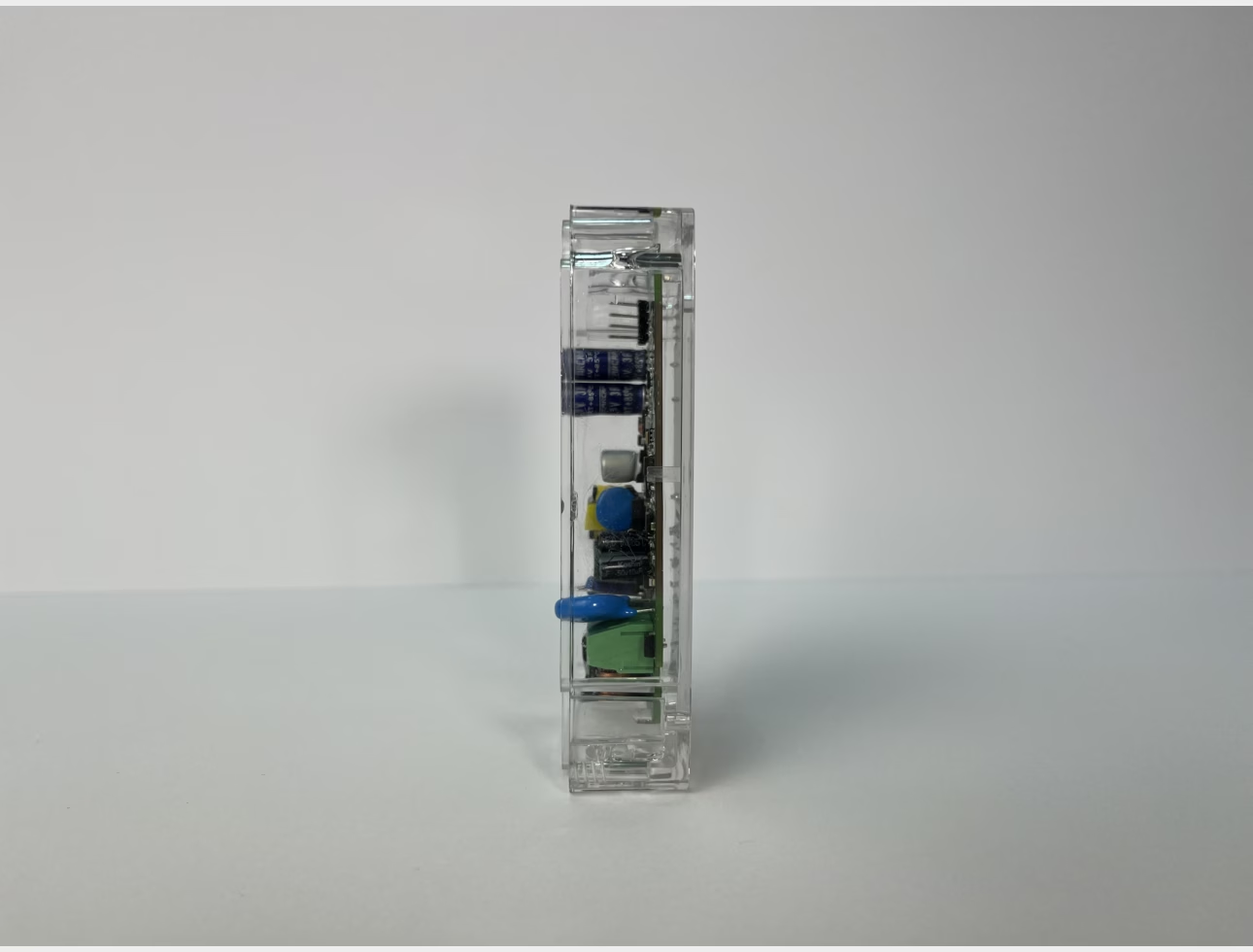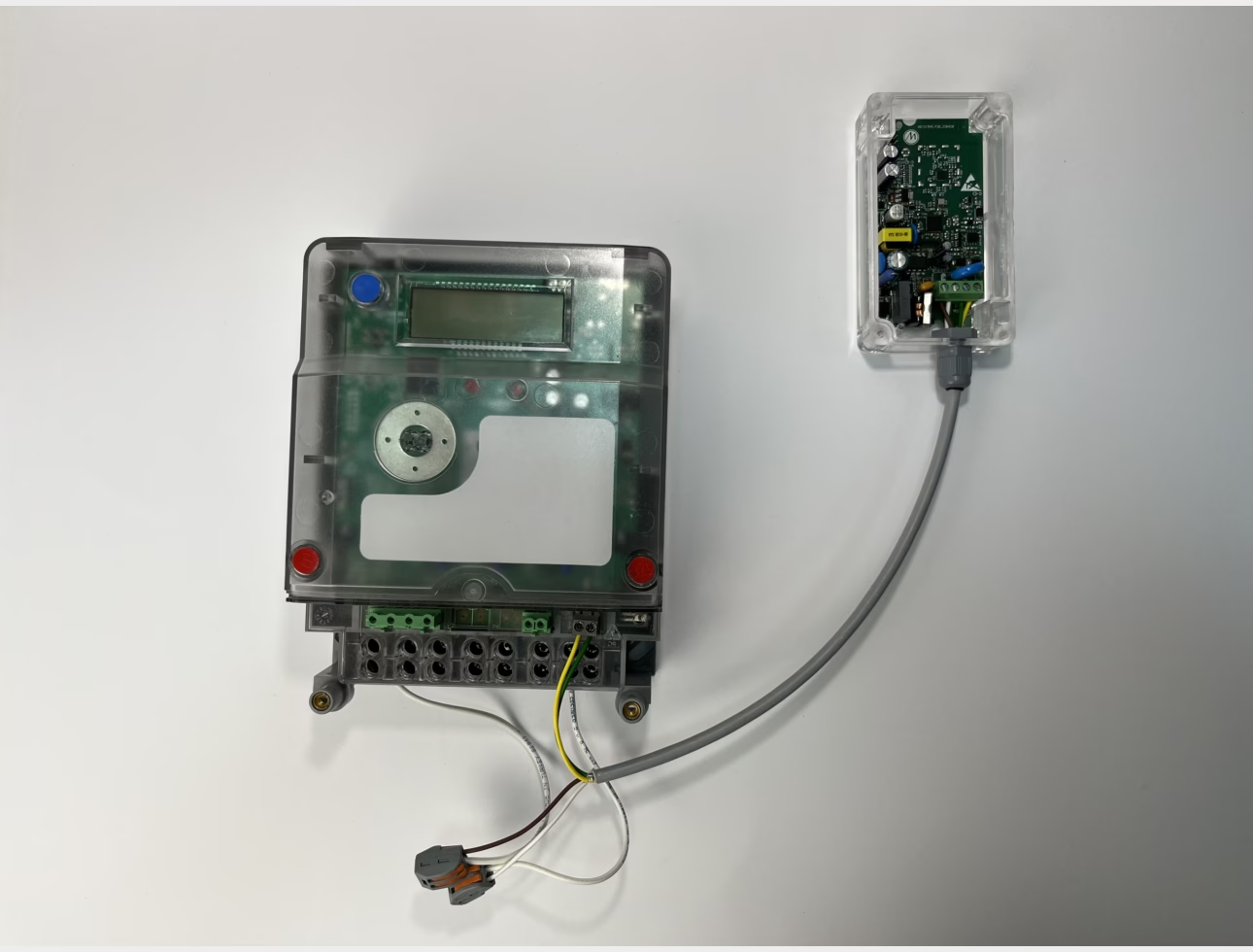Hardware Specifications:
Microcontroller (SoC): Texas Instruments CC1312R1, a powerful and efficient 32-bit ARM® Cortex®-M4F core operating up to 48 MHz.
Memory: 256 KB ROM, 352 KB Flash memory, and 80 KB SRAM.
Radio: Sub-1 GHz Radio supporting 868 MHz ISM band for long-range, reliable wireless communication. Also supports Bluetooth® 5.0 Low Energy on the 2.4 GHz band.
RF Performance: Linear amplifier for up to 500mW transmission power and high receiver sensitivity of -105 dBm. Includes integrated filters and linear amplifiers for robust communication against environmental noise.
RS-485 Interface: Integrated RS-485 driver supporting TTL signal levels (3.3V or 5V) and Half-Duplex communication. Features hardware-based automatic direction control or GPIO-controlled manual direction.
Power Supply: Onboard 10W switched-mode AC/DC power supply with integrated filter circuits and galvanic isolation for protection against high voltages and electrical noise. Includes a snubber circuit.
Power Continuity: Supercapacitor circuit for continued operation and notification transmission during power outages. PTC fuse for safe supercapacitor charging.
Hardware Reset: TPL5010/TPS3422 for system stability against software errors or freezes.
Antenna Options: Multiple PCB antenna designs (monopole and dipole) for internal and external antenna connections, optimized for 868 MHz with a 0.6 mm PCB thickness for robust electromagnetic performance.
Visual Indicators: Eight LEDs for status monitoring: POWER (device powered), HIGH/MID/LOW (RF signal quality based on RSSI values), NET (secure connection to data collector), ERROR (RS-485 read error or power cut), RX/TX (RS-485 data transmission activity).
Software Details:
Operating System: Based on the Contiki-NG embedded operating system, adapted for the TI CC1312R1 SoC.
Protocol Stack: Implements a custom protocol stack based on the IETF 6TiSCH standard, adapted for the 868 MHz band.
- Physical Layer (PHY): Provided by the SoC.
- MAC Layer: IEEE 802.15.4e TSCH (Time Slotted Channel Hopping) protocol adapted for industrial applications, optimized for low-speed systems and limited channel counts. This includes custom packet structures, timing allocations, and radio on/off routines.
- Resource Allocation Layer: 6Top layer for autonomous resource allocation of time slots among nodes, designed to minimize latency and maximize node inclusion.
- Adaptation Layer: 6LoWPAN (IPv6 over Low-power Wireless Personal Area Networks) from Contiki-NG, customized for the SoC, enabling IPv6 addressing.
- Routing Protocol: Modified RPL (Routing Protocol for Low-Power and Lossy Networks) with custom route selection algorithms adapted for the channel-hopping structure.
Application Layer: IEC 62056-21 protocol implementation for automatic meter reading and control, specifically designed for the SoC structure.
Security Mechanisms: Integrated encryption processes at the MAC layer using selected key sets, with required hardware drivers. Key management based on pre-defined keys and periodic updates from the data collector.
Data Compression: Custom lossless data compression approaches developed for low-entropy data, enhancing data transfer speed and efficiency.
Embedded Control Software:
- Software logic for automatic reset mechanism (interacting with TPL5010/TPS3422).
- Software for managing the supercapacitor circuit, including sending power cut notifications.
- Drivers for RS-485 communication, including direction control.
- Firmware for managing LED indicators based on system status (e.g., RSSI values for signal quality).
Software Development & Updates: Supports programming mode via specific connectors ("backdoor" functionality) for firmware loading and updates
Simulation & Validation: All developed code is validated in the COOJA simulation environment to ensure overall system performance and functionality
Key Features & Advantages:
Highly Reliable Wireless Communication: Ensures stable and robust data transfer even in noisy environments.
Energy Efficient: Ultra-low power consumption for extended battery life.
Industrial Protocol Compatibility: Supports standard industrial communication protocols like RS-485 and IEC 62056-21.
Comprehensive Security: End-to-end data encryption and robust key management.
Flexible Deployment: Supports both internal and external antenna configurations.
Hardware-Software Synergy: Integrated hardware reset and power management features for enhanced system stability.
Cost-Effective Production: Optimized single-board design for efficient mass production and easy IP67 enclosure integration.



